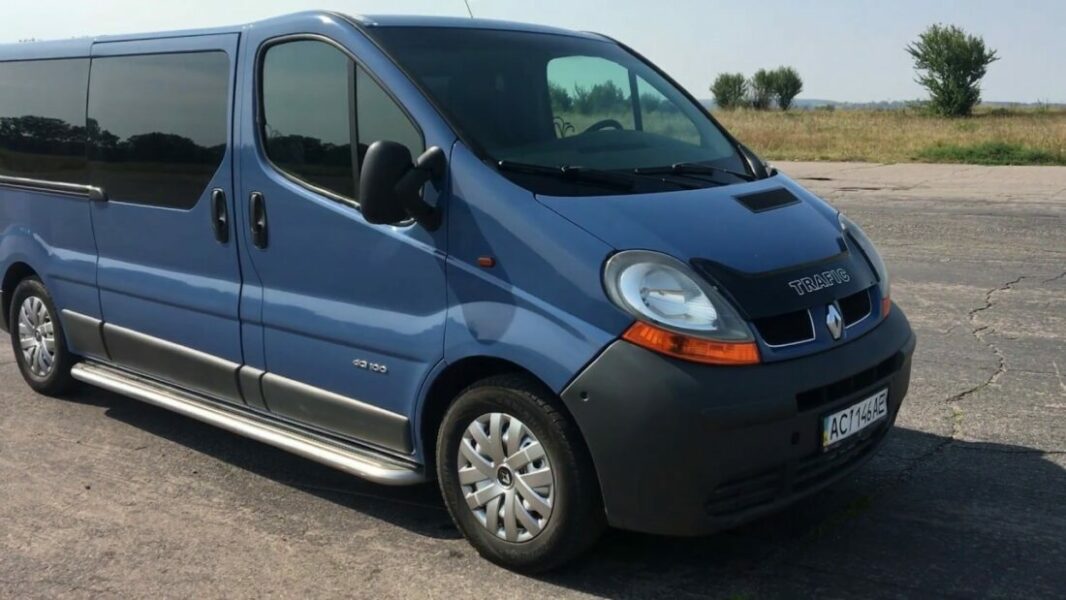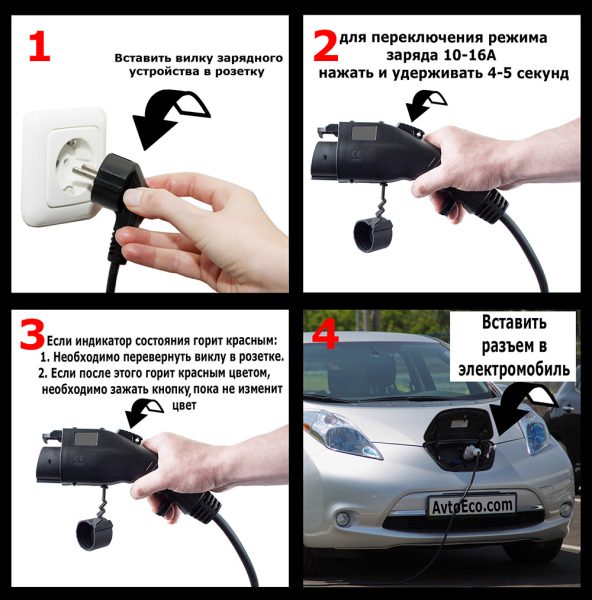
Renault Traffic 1.9 dCi
Content
A little. Obviously, the manufacturers thought so. First of all, couriers should be helpful! Ease of use is measured by the size of the space dedicated to freight transport. Ergonomics, of course, have little to do with this, nor does engine performance, so we don't waste a word on safety at all.
But times are changing. It is true that even the first Trafic in those early days brought a lot of freshness to the trucks. Certainly not as strong as the new ones. This time, the designers were clearly completely free. So it's no surprise the new Trafic is what it is. The steeply rising front line and huge teardrop-shaped headlights accentuated by large markers make this clear.
Also the domed roof, which Renault says resembles a Boeing 747 or Jumbo Jet, so its name "Jumbo Roof" is not surprising. No less interesting is the convex side line, which begins where the front bumper ends and evenly goes under the glass of the side door, and only there it kind of turns towards the roof.
Perhaps the least of the design innovations was the cargo space, which is actually quite understandable, but at the same time, the taillights should not be overlooked. The designers installed them in a similar way to the Kangoo, that is, in the rear pillars, but in Trafic it seems to you that Renault is especially proud of them. The glass with which they were covered conjures up an effect similar to a showcase that stores the most valuable items.
If you like the shape of the new Trafic, you might also be pleasantly surprised by the passenger compartment. A universal dashboard is difficult to attribute to a commercial van. However, it received this form not only because of a more attractive image, but mainly because of ease of use. For example, a canopy ensures that the sensors are always well shaded and transparent. Unfortunately, this does not only apply to the radio screen, which has found its place in the center console. It is too far from the canopy and too dimly shaded on sunny days. In addition, you will quickly find that there are not enough boxes for small items and that the box in the passenger door is only accessible when the door is open.
But under the canopy there are two very useful places for various papers (invoices, waybills ...) and other documents. There are two places for the ashtray, namely at the extreme edges of the dashboard, and the empty hole when there is no ashtray can also serve as a holder for cans or small bottles of drinks.
Also commendable are the air vents, which can be closed separately and which heat up the interior very quickly if there is a partition behind the front seats or which is cooled by the air conditioner. We can also commend the lever on the steering wheel for operating the factory radio with CD player and materials, especially on the dashboard! The plastic is smooth, pleasant to the touch, carefully selected color shades.
First of all, the sensors taken from Renault cars, the height-adjustable driver's seat and steering wheel borrowed from Espaco deserve praise. So it's no surprise that after a few miles of Trafic driving, you simply forget to drive the van. The only thing that reminds you of this is a view of the place where the center rearview mirror is usually installed.
Of course, since Trafic is a van, the latter is not! This in turn means that reversing can be quite difficult. Especially if you are not used to this task. There is no glass on the rear door, so only the outside rear-view mirrors help in reversing. But if you haven't overcome the Trafic measures yet, they won't save you from the dilemma. There is also no PDC (Park Distance Control) add-on. It's also not on the payroll list. Sorry!
The Trafic is almost 4 meters long and 8 meters wide, so you have a huge cargo area behind the driver and passenger seats. Admittedly, compared to the competition, it is not the largest, at least not in length and height, but it can undoubtedly be very useful. This Trafic can carry up to 1 kg of cargo. This is a very impressive figure compared to the competition.
Access is just as interesting. Cargo can be loaded into the cargo hold through the side sliding or rear doors, but you will have to pay extra (28.400 tolar) for the swing doors as lift doors come standard. Since the space is primarily intended for the transport of goods, it is also processed or not processed, but there is still plastic on the walls and two lamps to illuminate the room, with the door also opening from the inside.
And what is the best engine for the new Trafic? The technical data quickly shows that this is definitely a more powerful diesel engine. And not only because of the maximum torque (power from the gasoline engine is slightly higher), but also because of the new six-speed gearbox taken from the new Laguna, which is hard to argue with.
The gear ratios are perfect. The gear lever is comfortable, fast and precise. The engine is quiet, powerful, fuel efficient and extremely agile. The opportunities mentioned by the plant are simply impressive. We did not achieve them in our measurements, but we must not forget that the Trafic test was almost new and the measurement conditions were far from ideal.
All that said, the new Trafic convinced us. Perhaps least of all with its cargo space as we didn't use it much, but even more so with its passenger cabin, feel in it, ease of driving, great engine and of course the six speed gearbox. Transmission. As well as with the appearance. “Nothing like that,” says the make-up artist from among the vans.
Matevž Koroshec
PHOTO: Aleš Pavletič
Renault Traffic 1.9 dCi
Basic data
| Sales: | Renault Nissan Slovenia Ltd. |
|---|---|
| Base model price: | 16.124,19 € |
| Test model cost: | 19.039,81 € |
| Power: | 74kW (101 KM) |
| Acceleration (0-100 km / h): | 14,9 with |
| Maximum speed: | 155 km / h |
| Mixed flow ECE: | 7,4l / 100km |
| Guarantee: | 1 year general warranty, 3 years paint warranty, 12 years anti-rust warranty |
Cost (up to 100.000 km or five years)
Technical information
| engine: | 4-cylinder - 4-stroke - in-line - direct injection diesel - front mounted transversely - bore and stroke 80,0 × 93,0 mm - displacement 1870 cm3 - compression ratio 18,3: 1 - maximum power 74 kW (101 hp) at 3500 rpm - average piston speed at maximum power 10,9 m / s - specific power 39,6 kW / l (53,5 hp / l) - maximum torque 240 Nm at 2000 rpm - crankshaft in 5 bearings - 1 camshaft in the head (timing belt) - 2 valves per cylinder - light metal head - common rail fuel injection - exhaust gas turbocharger - charge air cooler - liquid cooling 6,4 .4,6 l - engine oil 12, 70 l - battery 110 V, XNUMX Ah - generator XNUMX A - oxidation catalyst |
|---|---|
| Energy transfer: | front wheel motor drives - single dry clutch - 6-speed manual transmission - gear ratio I. 4,636 2,235; II. 1,387 hours; III. 0,976 hours; IV. 0,756; V. 0,638; VI. 4,188 - pinion in differential 6 - rims 16J × 195 - tires 65/16 R 1,99, rolling circle 1000 m - speed in VI. gears at 44,7 rpm XNUMX km / h |
| Capacity: | top speed 155 km / h - acceleration 0-100 km / h 14,9 s - fuel consumption (ECE) 8,9 / 6,5 / 7,4 l / 100 km (gasoil) |
| Transportation and suspension: | van - 4 doors, 3 seats - self-supporting body - Cx = 0,37 - front individual suspensions, leaf springs, transverse guides - rear axle shaft, Panhard pole, springs, telescopic shock absorbers - dual-circuit brakes, front disc (forced cooling), rear disc , power steering, ABS, EBV, rear mechanical parking brake (lever between seats) - rack and pinion steering, power steering, 3,1 turns between extreme points |
| Mass: | empty vehicle 1684 kg - permissible total weight 2900 kg - permissible trailer weight with brake 2000 kg, without brake 750 kg - permissible roof load 200 kg |
| External dimensions: | length 4782 mm - width 1904 mm - height 1965 mm - wheelbase 3098 mm - track front 1615 mm - rear 1630 mm - driving radius 12,4 m |
| Inner dimensions: | length (dashboard to seat back) 820 mm - front width (knees) 1580 mm - front seat height 920-980 mm - longitudinal front seat 900-1040 mm - front seat length 490 mm - steering wheel diameter 380 mm – fuel tank 90 l |
| Box: | normal 5000 l |
Our measurements
| T = -6 ° C, p = 1042 mbar, rel. vl. = 86%, Mileage condition: 1050 km, Tires: Kleber Transalp M + S | |
| Acceleration 0-100km: | 17,5s |
|---|---|
| 1000m from the city: | 37,5 years ( 131 km / h) |
| Flexibility 50-90km / h: | 9,9 (IV.) / 15,9 (V.) p |
| Flexibility 80-120km / h: | 16,7 (V.) / 22,0 (VI.) P |
| Maximum speed: | 153km / h (WE.) |
| Minimum consumption: | 9,5l / 100km |
| Maximum consumption: | 11,0l / 100km |
| test consumption: | 10,2 l / 100km |
| Braking distance at 130 km / h: | 85,8m |
| Braking distance at 100 km / h: | 51,3m |
| Noise at 50 km / h in 3rd gear | 60dB |
| Noise at 50 km / h in 4rd gear | 59dB |
| Noise at 50 km / h in 5rd gear | 58dB |
| Noise at 50 km / h in 6rd gear | 58dB |
| Noise at 90 km / h in 4rd gear | 66dB |
| Noise at 90 km / h in 5rd gear | 64dB |
| Noise at 90 km / h in 6rd gear | 64dB |
| Noise at 130 km / h in 5rd gear | 70dB |
| Noise at 130 km / h in 6rd gear | 69dB |
| Test errors: | unmistakable |
Overall rating (339/420)
The new Trafic is a great delivery van. Superb mechanics, extremely comfortable interior, rich equipment, ease of driving and usable cargo space put it at the forefront of the competition. Riding on it is so pleasant that in many respects it surpasses even many personal cars. So the final score is not surprising at all.
Exterior (13/15)
The workmanship is good, the design is innovative, but not everyone likes the new Trafic.
Interior (111/140)
The interior undoubtedly sets completely new standards for vans that are even higher than some passenger cars.
Engine, transmission (38
/ 40)The engine and transmission are some of the best. Almost ideally!
Driving performance (78
/ 95)Driveability is excellent for a van, but the Trafic is not a passenger car.
Performance (28/35)
Commendable! The characteristics are fully comparable to most medium-sized passenger cars.
Security (36/45)
Renault is no stranger to automotive safety, as the Trafic of vans proves.
Economy
Unfortunately, Renault, like most European manufacturers, has a barely acceptable warranty. At least with us.
We praise and reproach
passenger compartment
flexible, quiet and economical motor
six-speed gearbox
materials in the interior
driving position
ease of driving
built-in safety as standard
fuel consumption
poor visibility back
too few drawers for small items
the box in the front passenger door is only accessible when the door is open
the third passenger sits very closely

